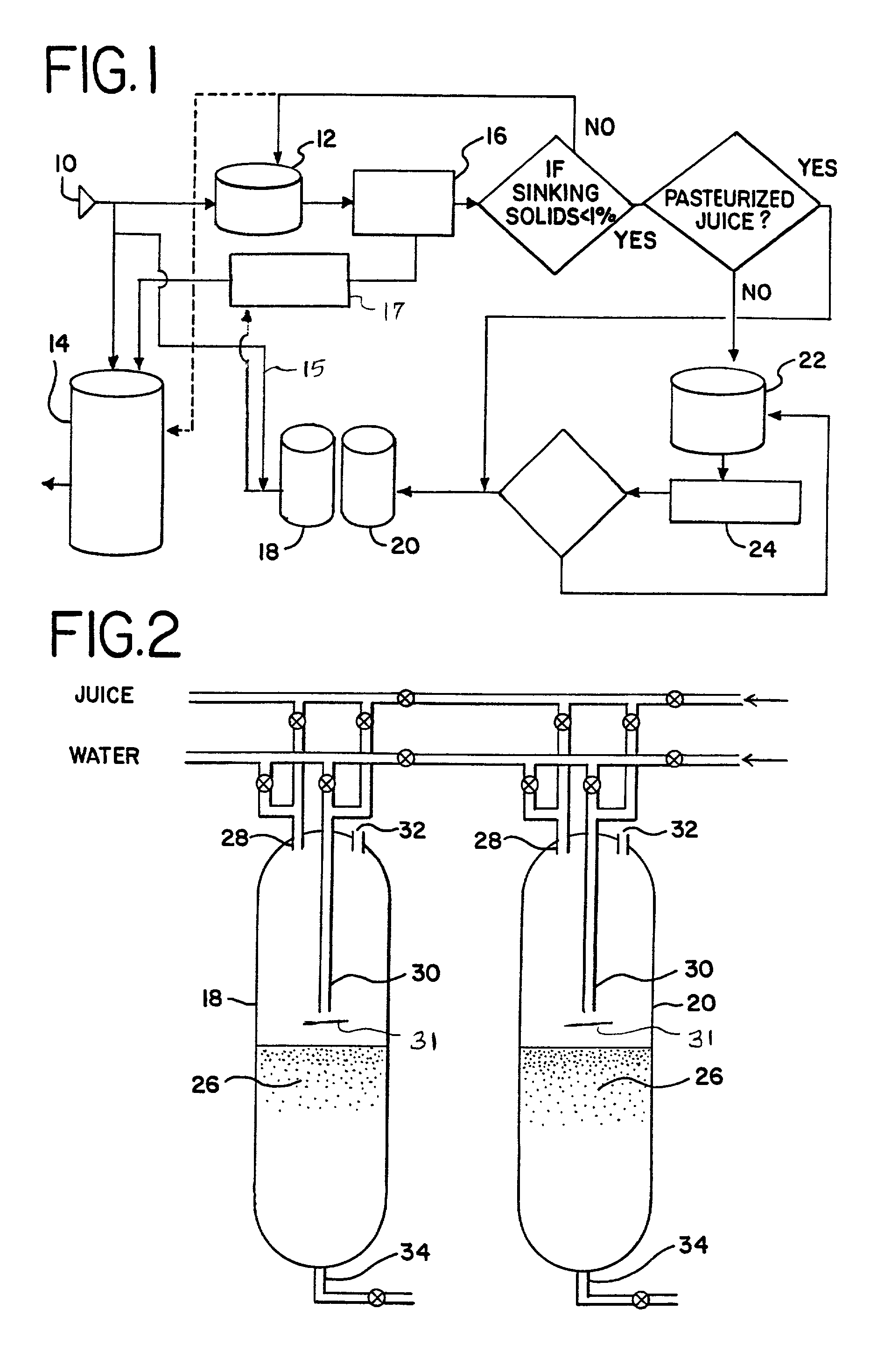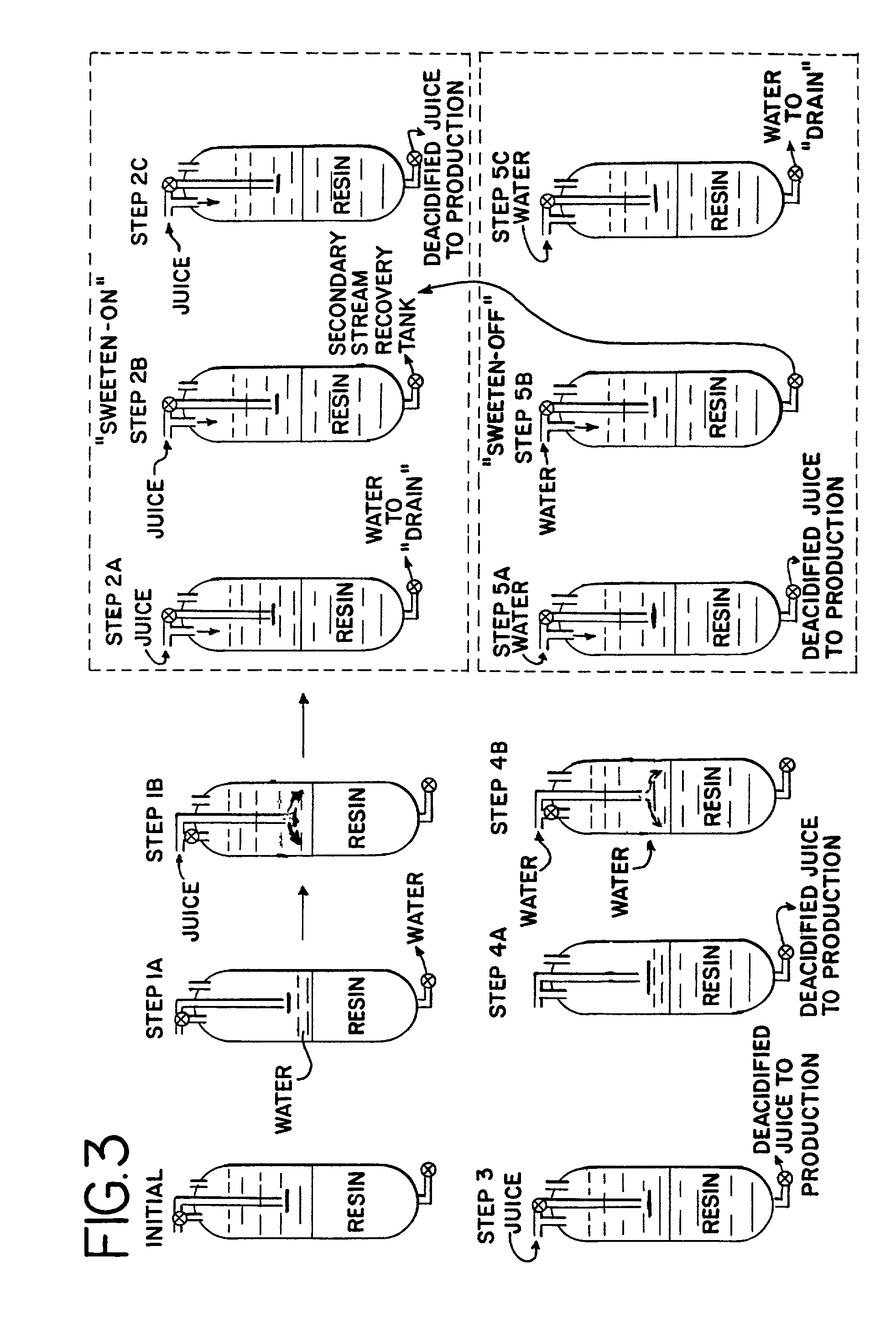Juice deacidification
a technology of deacidification and fruit juice, which is applied in the field of process and system for processing fruit juice and to a juice deacidification process and system, can solve the problems of provoking an allergic reaction, acidity level, and unfavorable persons with sensitive stomachs
- Summary
- Abstract
- Description
- Claims
- Application Information
AI Technical Summary
Benefits of technology
Problems solved by technology
Method used
Image
Examples
example 1
[0057]The following example illustrates the process for making low acid orange juice from NFC orange juice. The following are the parameters for the example: the titratable acidity of the NFC orange juice entering into the system at 10 is 0.68 percent, while the flow rate for the NFC feed is 133 gallons per minute (gpm). The cycle time for the process is 6 hours, resulting in a batch size of approximately 48,000 gallons. The volume of the resin in the column is 50 cubic feet, and the time required to regenerate the column is 3.5 hours.
[0058]From the inlet 10 to the system, 83 gpm of untreated juice is directly diverted to the blend tank 14. The remaining 50 gpm of untreated juice is directed to the centrifuge feed tank 12. The untreated NFC juice has the following characteristics: Temperature (35° F.); Acidity (0.68% w / w); pH (3.8); Suspended solids (11%); Oil (0.030% v / v); Ascorbic acid (40.9 mg / 100 ml); and Calcium (81 ppm).
[0059]Of the 50 gpm of juice entering the centrifuge, 5 g...
example 2
[0064]In a second example, microfiltration is used to separate the juice and solids, rather than centrifugation. Otherwise, the basic parameters are identical to those of Example 1. The titratable acidity of the NFC orange juice entering into the system is 0.74 percent; the flow rate for the NFC feed is 133 gallons per minute (gpm); the cycle time for the process is 6 hours; the batch size is 48,000 gallons; the resin bed has a volume of 50 cubic feet; and the time required the regenerate the column is 3.5 hours.
[0065]From the inlet to the system, 83 gpm of untreated juice is directly diverted to the blend tank. The remaining 50 gpm of untreated juice is subjected to microfiltration. The untreated juice has these characteristics: Temperature (35° F.); Acidity (0.74% w / w); pH (3.76); and Ascorbic acid (45.1 mg / 100 ml).
[0066]Of the 50 gpm of juice being subjected to microfiltration, 10 gpm does not pass through the filter membrane and constitutes the “retentate”. The retentate is dire...
PUM
 Login to View More
Login to View More Abstract
Description
Claims
Application Information
 Login to View More
Login to View More - R&D
- Intellectual Property
- Life Sciences
- Materials
- Tech Scout
- Unparalleled Data Quality
- Higher Quality Content
- 60% Fewer Hallucinations
Browse by: Latest US Patents, China's latest patents, Technical Efficacy Thesaurus, Application Domain, Technology Topic, Popular Technical Reports.
© 2025 PatSnap. All rights reserved.Legal|Privacy policy|Modern Slavery Act Transparency Statement|Sitemap|About US| Contact US: help@patsnap.com



